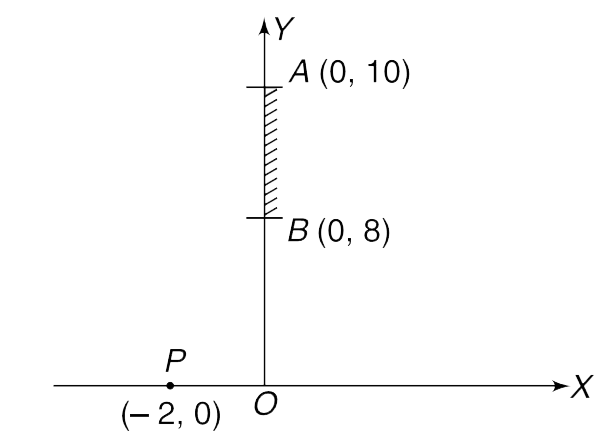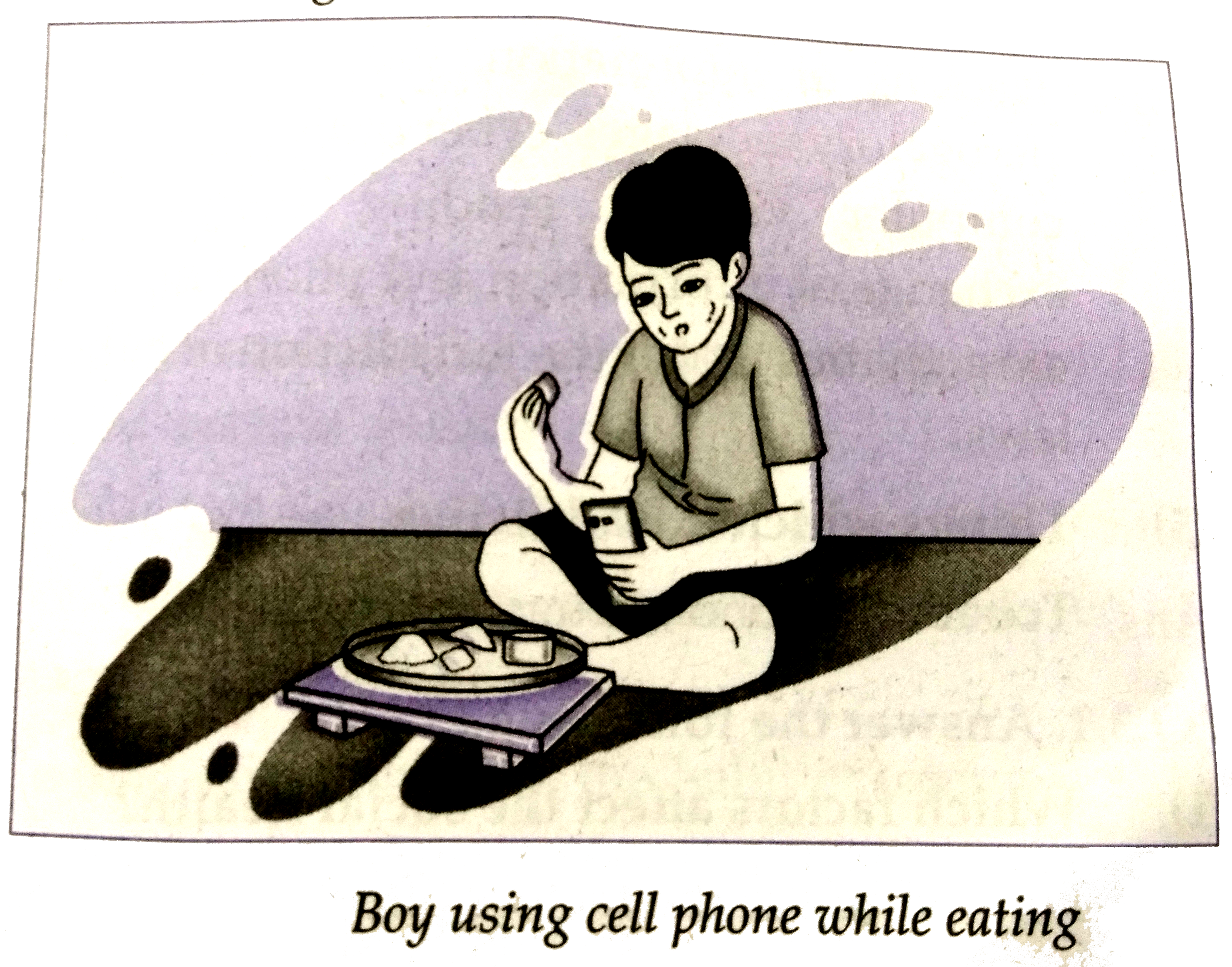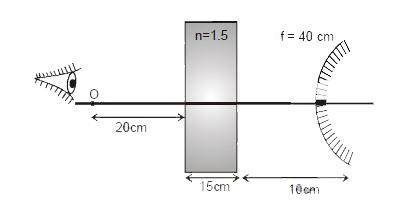The distance of final image from AB as observed by observer is P is
_E01_019_Q01.png) Solution in Gujrati
Solution in Gujrati
2cm
17.6cm
21.6 cm
2.4 cm
The correct Answer is:C
I1⇒ Image formed when rays passes through first slab
I2⇒ Image formed when rays passes through second slab
By using μ2v=μ1u=μ2−μ1R
_E01_019_S01.png)
Topper's Solved these Questions
- GEOMETRICAL OPTICSBOOK - ALLEN CHAPTER - GEOMETRICAL OPTICSEXERCISE - EXERCISE-2
44 Videos
- GEOMETRICAL OPTICSBOOK - ALLEN CHAPTER - GEOMETRICAL OPTICSEXERCISE - EXERCISE-3
12 Videos
- GEOMETRICAL OPTICSBOOK - ALLEN CHAPTER - GEOMETRICAL OPTICSEXERCISE - EXERCISE - 05 (B) (ASSERTION & REASON )
9 Videos
- CURRENT ELECTRICITYBOOK - ALLEN CHAPTER - CURRENT ELECTRICITYEXERCISE - EX.II
66 Videos
- GRAVITATIONBOOK - ALLEN CHAPTER - GRAVITATIONEXERCISE - EXERCISE 4
9 Videos
Similar Questions
Two mirrors are inclined at angle θ as shown in figure. Light rays are incident parallel to one of mirrors. Light will start retracing its path after the reflection if
View SolutionPlane mirrors are arranged parallel to each other as shown in column-I and the number of images formed by the combination is in column- II
_E01_090_S01.png)
View SolutionStatement-1: The total translational kinetic energy of fall the molecules of a given mass of an ideal gas is 1.5 times the product of its pressure and its volume because.
Statement-2: The molecules of a gas collide with each other and the velocities of the molecules change due to the collision.
View SolutionIn the Bohr's model of hy drogen atom, the electron moves around the nucleus in a circular orbit of radius 5×10−11m. Its time period is 1.5×10−16s. The current associated with the electron motion is:-
View SolutionAssertion : The difference in the value of acceleration due to gravity at pole and equator is proportional to square of angular velocity of earth.
Reason : the value of acceleration due to gravity is minimum at the equator and maximum at the pole.
View SolutionA flat glass slab of thickness 6cm and index 1.5 is placed in front of a plane mirror. An observer is standing behind the glass slab and looking at the mirror. The actual distance of the observer from the mirror is 50cm. The distance of his image from himself, as seen by the observer is
View SolutionAn object is approaching a plane mirror at 10cms−1. A stationary observer sees the image. At what speed will the image approach the stationary observer ?
View SolutionIf an observer is walking away from the plane mirrorr with 6m//sec . Then the velocity of the image with respect to observer will be
View SolutionFind the distance of final image from mirror.
View SolutionConsider the situation shown in the Figure. The mirror AB forms image of point object P. Co-ordinates of A, B and P are (0, 10) m, (0, 8) m and (–2,0)m respectively. Two observers O1 and O2 are located at (–2,10)m and (–1,13)m respectively.
(a) One of the two observers cannot see the image of point P. Identify the observer.
(b) To ensure that both the observers are able to see the image, it was decided to use a longer mirror. Keeping the upper end of the mirror fixed at A (0, 10) m, what is the minimum length of mirror required so that both observers can see the image of point P?

View SolutionThe mean of 16 observations is 16 . If one observation 16 is deleted and three observations 5 , 5 and 6 are included , then find the mean of the final observations .
View SolutionObserve the image. Is it rational ? Why ?


View SolutionFindout the distance between image and the mirror as observed by observer in the figure shown below

View Solutionएक समतल दर्पण प्रेक्षक की ओर 10 सेमी/से की चाल से आ रहा है जिसमें प्रेक्षक अपना प्रतिबिम्ब देख रहा है । प्रेक्षक का प्रतिबिम्ब प्रेक्षक की ओर किस चाल से आ रहा है ज्ञात कीजिए ?
View SolutionA flat glass slab of thickness 6cm and index 1.5 is placed in front of a plane mirror . An observer is standing behind the glass slab and looking at the mirror. The actual distance of the observer from the mirror is 50cm. The distance of his image from himself, as seen by the observer is
View SolutionObserve the image. Is it rational? Why?
View Solution
